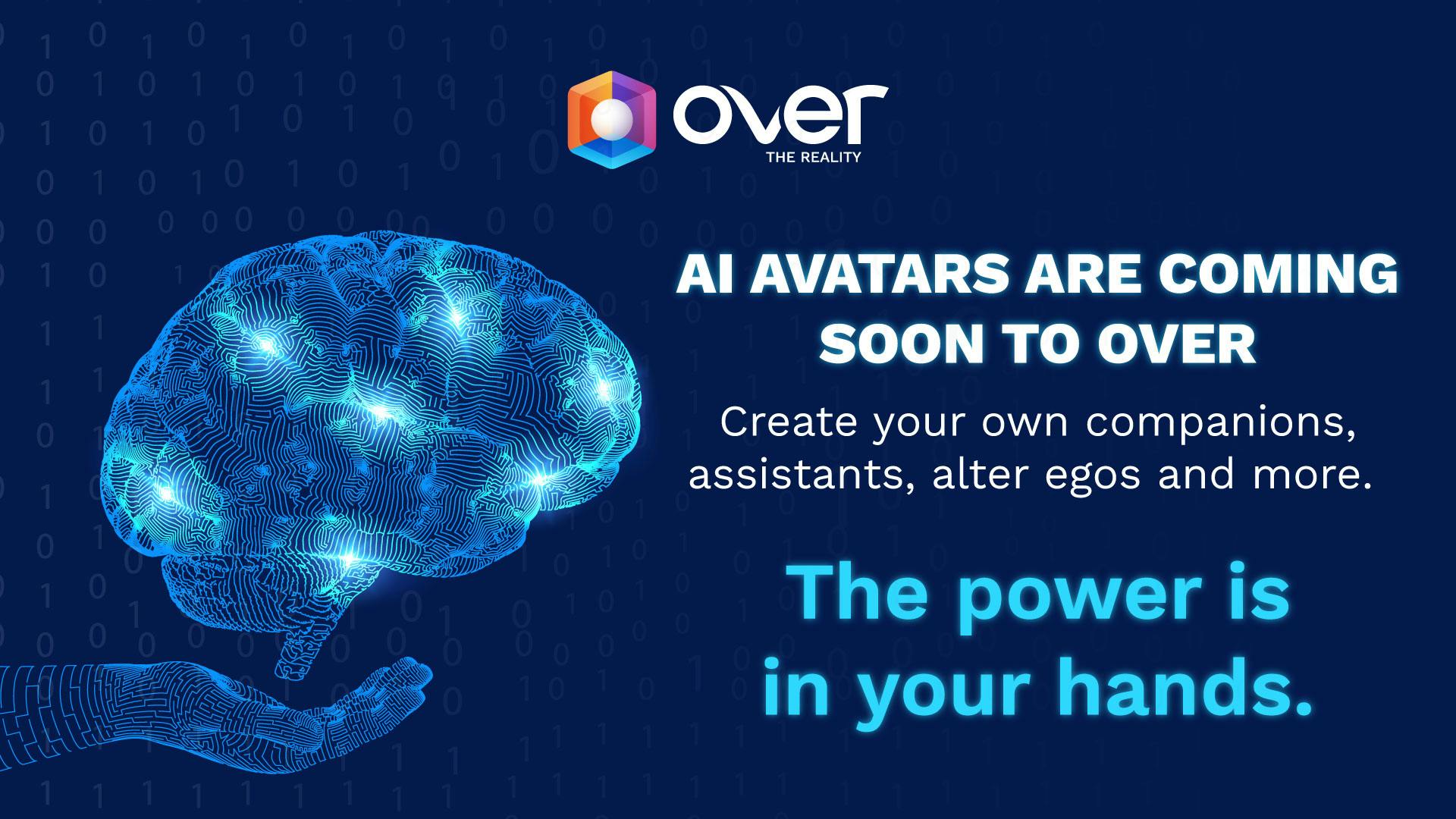
AI Avatars are coming soon to OVER
2023-03-16
ChatGPT is, not surprisingly, one of the most discussed developments in tech. The fastest-growing product on the market ever, it has attracted one million users in less than a month. The impact of such a technology cannot be understated. The flexibility and the scope of capabilities exhibited by Large Language Models (LLMs) it’s so broad that it’s easy to imagine their application to any sector. The metaverse has not been sleeping on such a trend, with several players talking about use cases and integration of ChatGPT into their metaverse to significantly enhance non-player character (NPC) avatars. But is this even possible?
To answer that question, let’s dig into the technology.
ChatGPT is a fine-tuned version of GPT3 using a technique called Reinforcement Learning from Human Feedback (RLHF). The base model (GPT3) answers are evaluated by humans, and such scoring is used to fine tune the model to induce it to generate answers that humans will value positively.
GPT3 by itself is an incredibly powerful model with over 175 billion parameters and impressive results on most of the natural language processing (NLP) tasks, yet it is not optimized for dialogue, and this is where the RLHF shines. The fine tuning technique is so powerful that when using it, even on much smaller models, the models outperform the raw results from GPT3.
So, back to our question: Can you use ChatGPT to enhance avatars in the metaverse? The short answer – not really. There are several reasons for this.
For starters, ChatGPT does not allow you to create characters. You can try to force a character dialogue “hacking” the system with prompt engineering but the system is conceived to proactively discourage such activity.
The second reason is cost. At the time of writing, access to GPT-3 (Davinci) APIs costs $0.02 for one thousand tokens, which roughly equates to 750 words. At first glance, this seems cheap, but you need to take in mind how transformers work: at every new interaction, the model will input the initial prompt, and all of the history of the conversation up to 4k tokens. That means that you have a compounded growth in the length of tokens you’ll consume on each new interaction, and this will quickly explode in size. Add thousands of users and this soon becomes economically unsustainable.
Third – scale. GPT3 and ChatGPT are massive models with around 175 billion parameters. To run the model you’ll need roughly 300 GB of GPU memory with several expansive last-generation GPU cards in parallel, capable of serving a limited number of concurrent users. Running high memory, last-generation GPUs on the cloud is very expensive and thus inherently difficult to scale
Finally, ChatGPT is a very novel service but it’s currently not possible, or even permitted, to create characters on ChatGPT. Typically, it’s unwise to build a business that relies on a single supplier who could close the service or raise prices on a whim.
It’s for these reasons that we at OVER took it upon ourselves to build a standalone LLM using open source and less computationally-intensive LLMs, fine tuned with RLHF. It allowed us to address and resolve the issues of OpenAI’s ChatGPT and GPT3 models.
What this means for OVER users and creators is the ability to access and interact with an uncensored and open version of a state-of-the-art large language model that delivers comparable results and flexibility.
They will be able to create customized characters for their own NPCs, virtual assistants, companions, or alter egos with a natural language prompt.
This natural language prompt is something we call ‘the magic spell’ – an initial personal story that defines the behavior of an avatar. This original personality will be retained while the engine that drives the system will be regularly updated to keep pace with state of the art of open-source LLMs.
The first iteration of our new system will be rolled out during the ‘The Lost Wallet’ treasure hunt, which starts on April 17 on the OVER platform. A first-of-its-kind cross-metaverse game, The Lost Wallet involves multiple metaverse projects, such as Decentraland, The Sandbox and others.
Participants will be tasked with scouring these different worlds for the 24 words of a private key that controls a Crypto Punk NFT. In order to find the word hidden on OVER, you’ll have to interact with and ask the right questions of avatars powered by our very own AI Large Language Model.
We’re excited to be finally rolling out this technology, and for such a fun activation, after twelve months of work by our development team.
But this is just the beginning and taster of what’s to come. In the coming months, we will enable creators to build their own AI Avatars and unleash them on their OVRLands.
Anyone for an AR version of Westworld?
